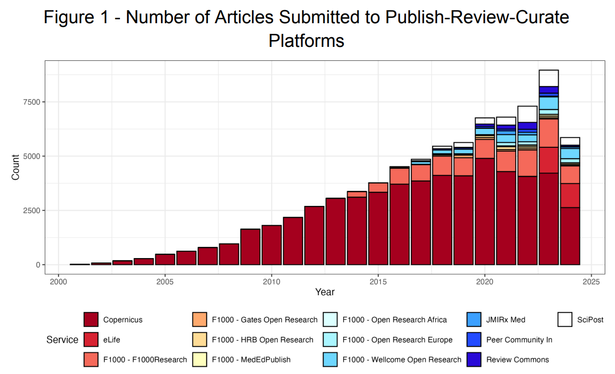Impressed by contribution of journal Atmospheric Chemistry and Physics, other @EuroGeosciences journals and Copernicus Publications to innovation in scientific publishing.
They have successfully operated the publish-review-curate model already for over 20 years.
Read more here: https://doi.org/10.5194/egusphere-2025-419.
Opinion: Improved scientific discourse and quality assurance by interactive open access publishing with community-based multi-stage open peer review in an open science landscape
Abstract. Scientific discourse and quality assurance can be improved by open science through public peer review and community discussion of preprints on open access (OA) publishing platforms. Over 25 years, the viability and benefits of this approach have been proven by the interactive OA journal Atmospheric Chemistry and Physics (ACP) and 18 other journals published by the European Geosciences Union (EGU) and the scientific service provider Copernicus Publications. The success of the EGU journals employing multi-stage open peer review reflects the attractiveness and benefits of community-driven, interactive OA publishing, including high scientific quality and impact, efficient self-regulation, low cost and financial sustainability. Since 2001, EGU has published over 50 000 journal articles, 60 000 preprints, and 250 000 interactive comments, utilizing and integrating different financing models of OA (green, gold, diamond/platinum). The EGU interactive OA journals are linked to the OA repository and interactive community platform EGUsphere and to the virtual scientific highlight magazine EGU Letters, integrating different levels of scientific communication and exchange. The EGU publications combine multiple features of open science, including different forms of open peer review and community evaluation with open access, open data, and open source elements tailored to the needs and preferences of different disciplines. We review the approach, achievements and future perspectives of interactive OA publishing (including transformative/institutional agreements and AI/ML tools) and its contribution to a universal epistemic web that captures the scientific discourse and comprehensively documents what we know, how well we know it, and where the limitations are.
